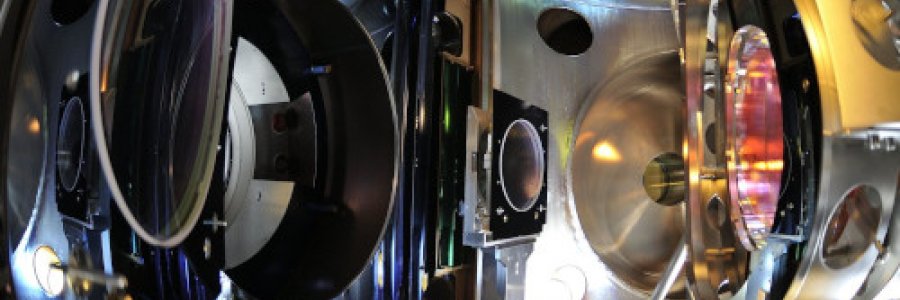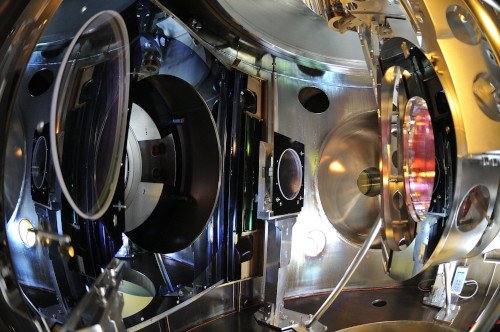
Quantum effects make Virgo mirrors jitter
A quantum mechanical effect measured for the first time in the Advanced Virgo and LIGO gravitational-wave detectors. Quantum mechanics does not only describe how the world works on its smallest scales, but also affects the motion of macroscopic objects, such as the 42-kilogram mirrors of the Virgo interferometer. To detect gravitational waves, Virgo and LIGO measure tiny changes in the lengths of their laser interferometer arms, changes as small as one thousandth of a proton diameter.
The two detectors use laser light to measure, with the highest precision, the relative position of mirrors that are kilometres apart. For this reason, these mirrors are kept as 'still' as possible and are shielded from all possible noises of human or environmental origin. Even in the absence of any gravitational-wave signals or noise sources, these mirror position measurements would show a slight jitter. This is due to the so-called shot noise, i.e. the pattern of the randomly and irregularly arriving light particles. In both Virgo and LIGO, during the third observation period (O3), this noise was reduced by 'squeezing' the light, using a particular quantum optics technique. Unfortunately, it is not possible to do this without paying a price.
Following one of the fundamental laws of quantum mechanics - Heisenberg's uncertainty principle - a reduced shot noise results in increased radiation pressure noise: the force with which the stream of light particles pushes on the mirrors, fluctuates more strongly. As a result, the mirrors, each weighing 42 kg, move back and forth more, simply because of the effects of quantum mechanics. In fact, the shot noise affects the sensitivity of the detector at high frequencies, while the radiation-pressure noise disturbs the detection of signals with lower frequencies. Getting out of this impasse is not easy. If, on the one hand, the detectors increase sensitivity at high frequencies, and therefore to a certain type of gravitational-wave source, on the other, they become less able to identify low-frequency signals.
"Thanks to the collaboration with the Albert Einstein Institute in Hannover", explains Jean Pierre Zendri, senior researcher of the Istituto Nazionale di Fisica Nucleare (INFN) in Padova and member of the Virgo Collaboration, "we succeeded to show for the first time a clear evidence of the radiation-pressure noise on the massive detector mirrors. This was allowed by the extraordinary sensitivity of Advanced Virgo, which allows us to appreciate fluctuations of the mirror positions to less than a thousandth of a proton diameter." The results of this research have now been published in Physical Review Letters.
To further improve the detector's performance, gravitational-wave scientists are developing a new technology, called frequency-dependent squeezing, which will make it possible to reduce the quantum mechanical noise at both high and low frequencies. The implementation of this technology is actually one of the crucial steps of the upgrade of the Advanced Virgo Interferometer, which will be taking place over the coming months at the European Gravitational Observatory near Pisa in Italy.

Image: The Virgo test-mass mirror inside its actuation cage. The mirror and actuation cage are both suspended from a Virgo Superattenuator. A layer of protective polymer (visible in pink) still covers the mirror, preventing dust contamination during installation. On the left, two mirrors can be seen. These are part of the sensor that monitors the tiny thermal deformations of the test-mass mirror occurring during operation. Black-coated panels surround the optical elements to absorb residual stray light.
Image credit: EGO/Virgo Collaboration/Perciballi
